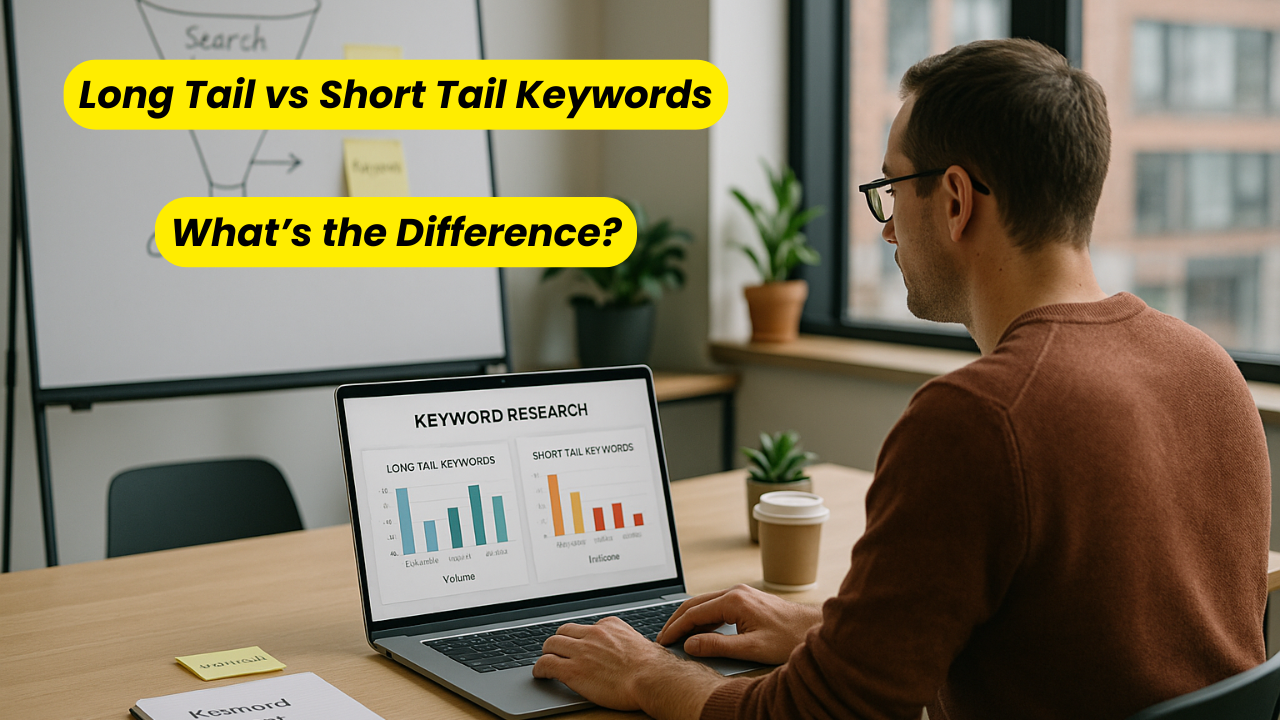Introduction: Why This Matters to You
Imagine owning a small business in a busy U.S. city. You’ve built a unique service or product and launched your website. You start blogging, investing in SEO, and maybe even running ads. But the traffic you attract doesn’t stick, and conversions stay flat.
That’s when you realize: your keyword strategy might be speaking to everyone but reaching no one.
To improve your search visibility and attract visitors who actually convert, you need to understand the difference between long tail keywords and short tail keywords. These two keyword types play very different roles in how people find you online.
This guide explains the difference using real-world examples, current search trends, and strategic SEO techniques. It’s tailored for business owners who want to use data, not guesswork, to drive relevant traffic.
What Are Short Tail Keywords?
Short tail keywords are broad, general terms that consist of one to three words. They cover wide topics and attract large volumes of search traffic.
Examples:
- “lawyer”
- “coffee shop”
- “insurance”
These keywords offer volume, but not clarity. They are often used early in the customer journey and carry little information about the user’s intent.
Characteristics
- 1–3 words long
- High monthly search volume
- High competition
- Ambiguous intent
Short tail keywords work well for top-level category pages or brand awareness campaigns. However, they are less effective for generating immediate leads or conversions.
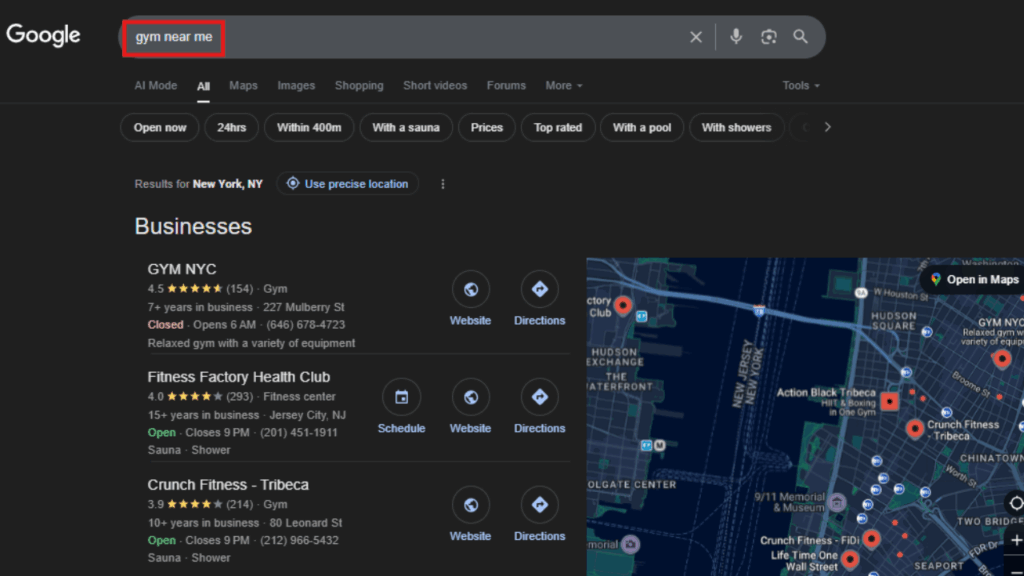
What Are Long-Tail Keywords?
Long tail keywords are longer, more specific search phrases that better reflect what the user is actually looking for. Typically, they contain four or more words.
Examples:
- “emergency dentist open late in Brooklyn”
- “best project management tool for nonprofits”
- “affordable life insurance for single parents”
These keywords usually have lower search volume, but they attract a more qualified audience.
Characteristics
- 4+ words in length
- Lower individual search volume
- Lower competition
- Clearer user intent
Because they closely match what users need, long tail keywords tend to produce higher engagement and better conversion rates.
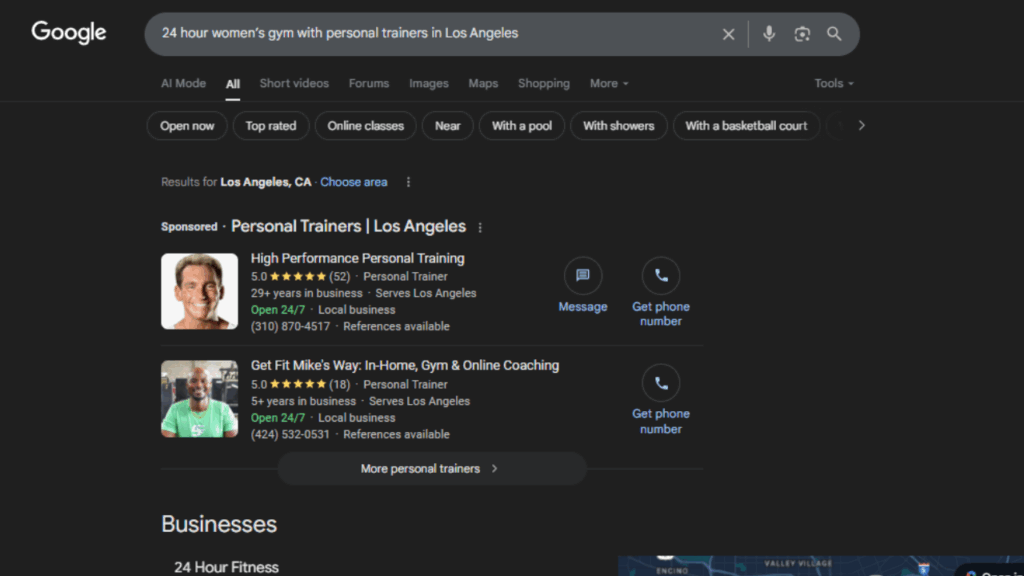
Short Tail vs Long Tail: Side-by-Side Comparison
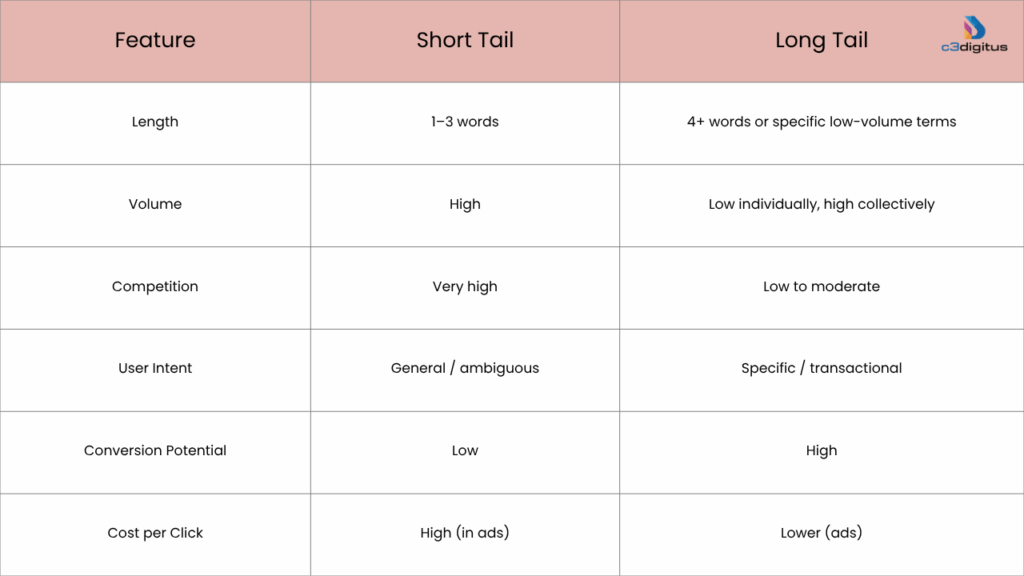
Short tail keywords get attention. Long tail keywords get action.
The Role of Search Intent
Search intent explains why someone types a query into a search engine. Understanding this is essential for keyword targeting.
Types of Intent
Informational: Seeking knowledge or answers.
- “how to write a business plan”
Navigational: Looking for a specific site or page.
- “IRS website login”
Transactional: Ready to take action or buy.
- “hire local plumber in Nashville”
Long tail keywords tend to match transactional or commercial intent, while short tail keywords are often informational or exploratory.
Understanding search intent helps you decide whether to go broad or specific with your keywords.
Why Long Tail Keywords Lead to Higher ROI?
1. More Targeted Visitors
Users searching specific terms are more likely to take action. This improves your return on both organic and paid efforts.
2. Lower Cost Per Click
In platforms like Google Ads, long tail keywords usually cost less because there’s less bidding competition.
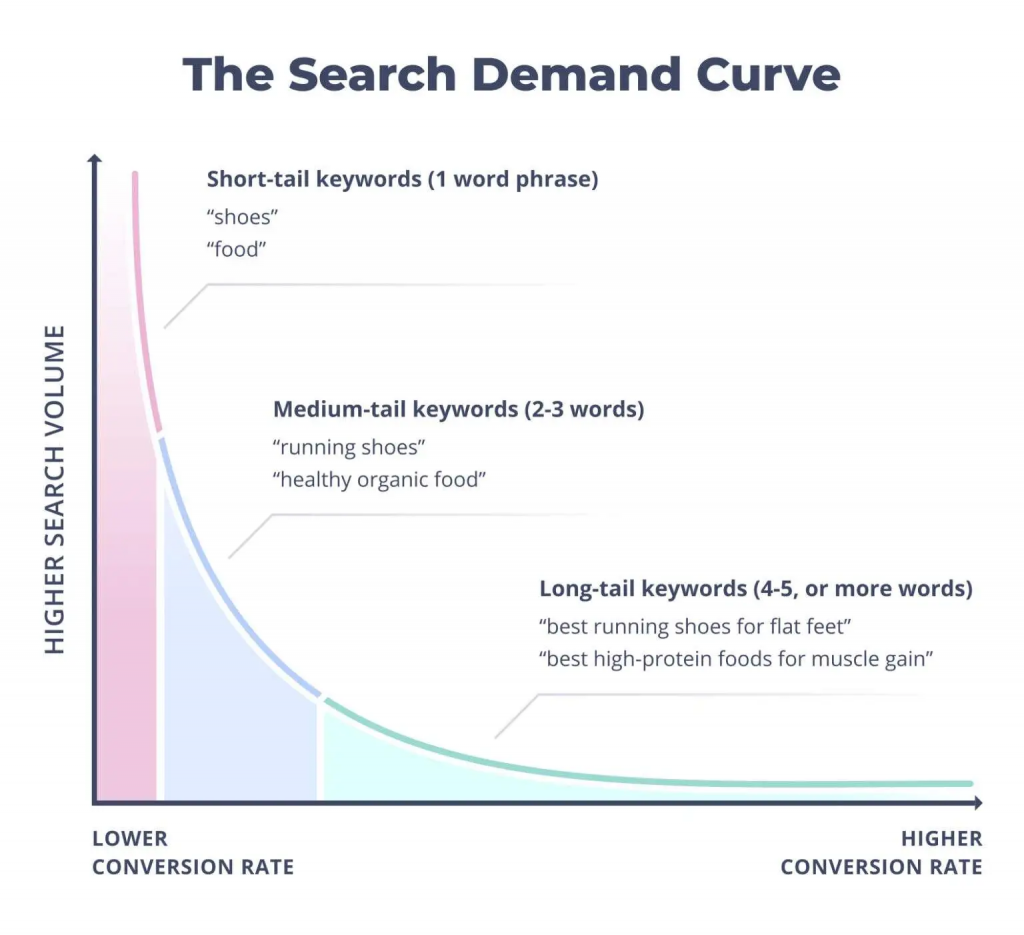
Source: https://hawksem.com/blog/short-tail-keywords-vs-long-tail-keywords/
3. Better Alignment with Voice Search
Voice assistants encourage full-sentence searches. Long tail keywords capture those exact phrases.
4. Opportunity to Rank Faster
Fewer pages compete for long tail keywords. That means newer or smaller websites can see quicker gains.
According to a study by Ahrefs, 92% of all keywords searched online are long tail terms. Ignoring them means missing the majority of traffic opportunities.
When to Use Short Tail vs Long Tail Keywords
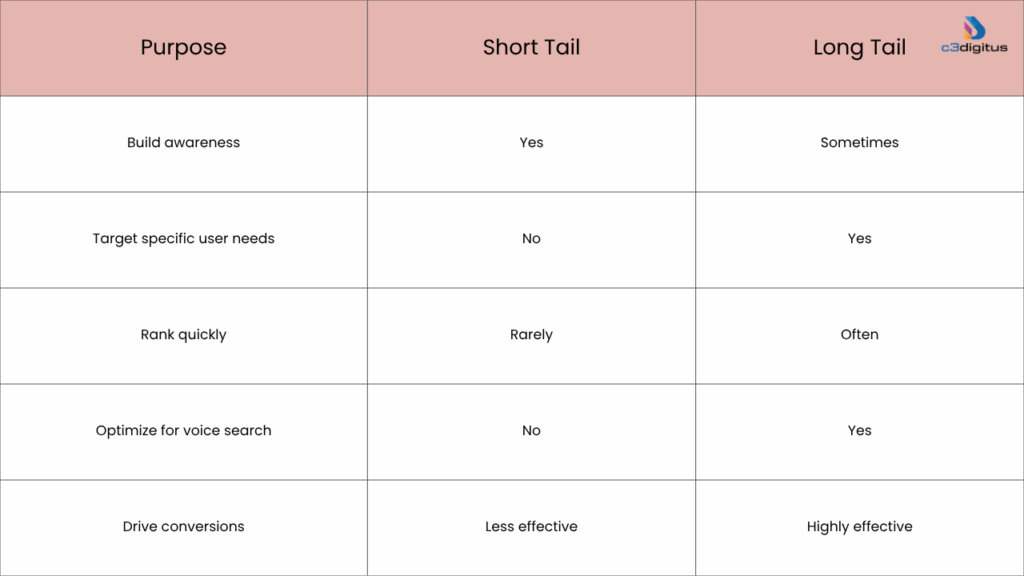
The right balance depends on your site’s authority, competition level, and business goals.
How to Research Keywords Strategically
Step 1: Identify Core Business Topics
List the services or products you offer. These form your short tail base.
Step 2: Expand Using Tools
Use Google Keyword Planner, Ubersuggest, or SEMrush to find long tail variations.
Step 3: Analyze Intent and Competition
Review each keyword’s volume, keyword difficulty, and search intent.
Step 4: Use Google Autocomplete
Type your keyword into Google and observe the autosuggestions and People Also Ask box. These are gold mines for long tail keyword ideas.
Step 5: Prioritize for Relevance
Choose keywords that closely match your audience’s needs and your business offering.
Building a Balanced SEO Strategy
Here is one way to structure keyword targeting across your website:
Homepage
- Focus keyword: short tail
- Example: “digital marketing agency”
Service Pages
- Mid or long tail keywords based on each offering
- Example: “SEO services for healthcare providers”
Blog Posts
- Long tail keywords based on specific questions
- Example: “how to use Google Analytics for small business growth”
Local Pages
- Long tail, location-based terms
- Example: “restaurant website design in Portland Oregon”
Internal Links
- Guide users between informational and transactional content
- Example: Link “website SEO basics” to your SEO services page
Practical Examples by Industry
Law Firm
- Short Tail: “divorce lawyer”
- Long Tail: “divorce lawyer offering free consultations in Phoenix”
E-Commerce
- Short Tail: “headphones”
- Long Tail: “wireless noise-cancelling headphones for gym use under $100”
SaaS Product
- Short Tail: “CRM software”
- Long Tail: “best CRM for solo entrepreneurs with lead scoring features”
In every example, long tail keywords speak to a user with a specific goal and higher likelihood of taking the next step.
Both long tail and short tail keywords have a place in your SEO toolkit, but their effectiveness depends on how and when you use them.
Short tail keywords define your general category and help with broad exposure. Long tail keywords attract ready-to-act users, enhance relevance, and increase conversions.
A smart SEO strategy integrates both. Use short tail terms for brand identity and category signaling. Use long tail keywords to create specific content that solves real problems.
Curious about how your current keyword strategy is performing? An SEO audit can offer insights into opportunities you may be missing.

